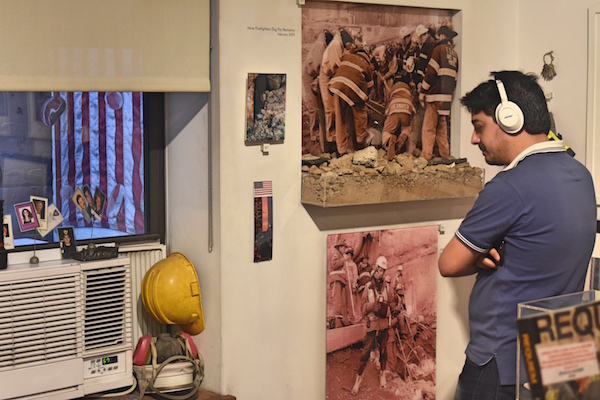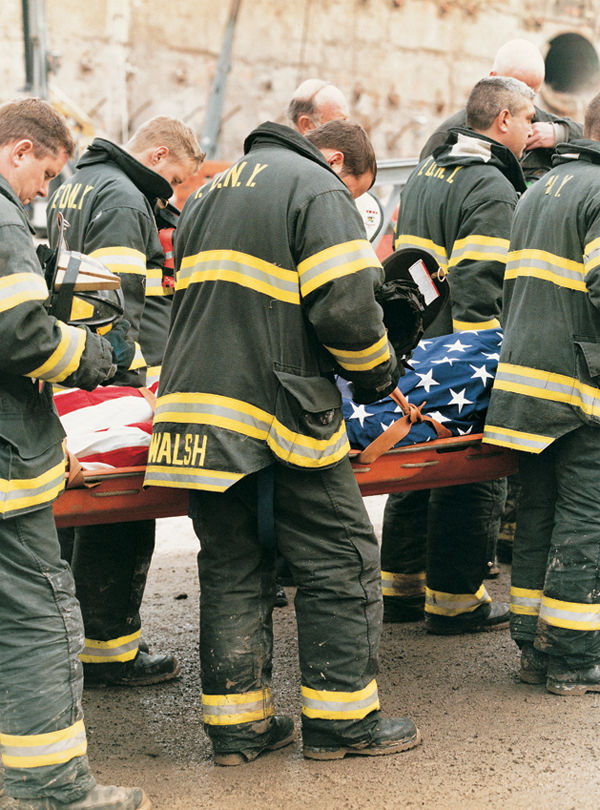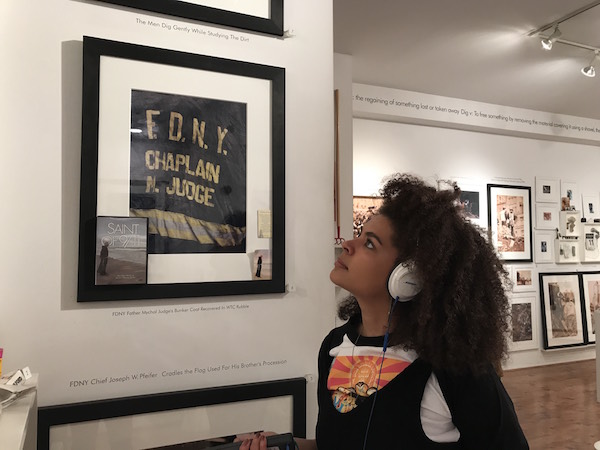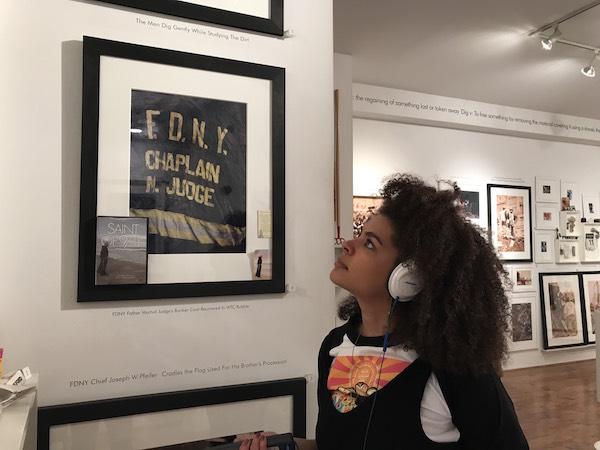
BY LEVAR ALONZO | A museum founded, and often funded, by a photographer who spent seven months at Ground Zero is facing a challenge far greater than the struggle to keep its doors open.
“It’s surprising to realize that it has been 16 years since the 9/11 catastrophe, and more and more people I meet forget what really happened surrounding America’s worst terrorist attack in US history,” said Ground Zero Museum Workshop curator Gary Marlon Suson, shortly before the Sept. 7 unveiling of a new sculpture and companion documentary timed for the 12th anniversary of the interactive museum dedicated to education and reflection.
Suson, an FDNY Honorary Battalion Chief, was the official photographer at Ground Zero for the Uniformed Firefighters Association — one of only two photographers (and the only one with full access) allowed at the site past the first few weeks, when then-mayor Rudy Giuliani closed it to press out of respect for the families of those whose bodies were still being pulled from the site.
Suson’s capture of the North Tower in mid-collapse was shot on the rooftop of the museum he later founded (located on W. 14th St. in the Meatpacking District). Unlike the considerable distance from which that shot was taken, Suson’s work at Ground Zero consisted largely of close-ups, to emphasize the intimate nature of recovery efforts. “I focused more on people, and the emotions of Ground Zero,” Suson noted of the many “private moments, like the honor guards.”
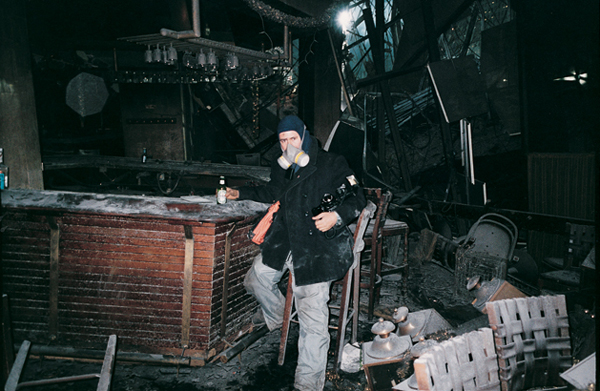
In addition to over 100 of Suson’s photos, the 1,000-square-foot second floor space that houses the museum also displays dozens of images and artifacts of love, death, and sacrifice — including window glass, a ticket stub of the last PATH train to arrive at World Trade Center, and white lobby marble from the towers. The museum pales in comparison to the much larger, more well-known, and better-funded National September 11 Memorial & Museum. Suson said that on slow months, he has had to put up his own money to keep his own museum going. He has also started to work with the Memorial & Museum by allowing them to use his photographs.
“I’m just happy that my images are going to be in a place that more people can see them,” Suson said. “As challenging as it is to keep the [Ground Zero Workshop] museum’s doors open, it’s minuscule compared to the challenges faced by the victims’ families on a daily basis.”
What sets the museum apart is its interactive nature. Visitors can pick up the artifacts, and hear Suson’s detailed and emotional first-hand accounts of being in the pit (he not only shot photos, but was also part of the recovery effort, working with rescuers in the search for survivors).
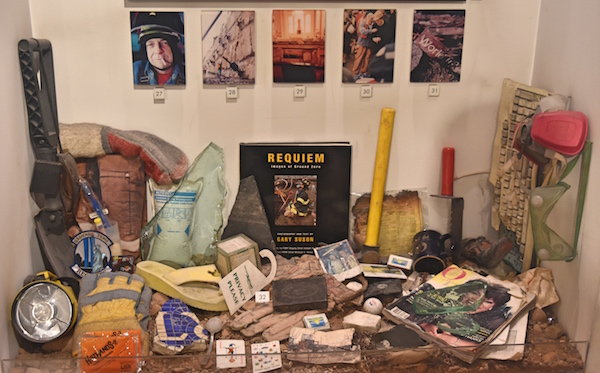
One thought-provoking photograph shows a bunker jacket discovered in January 2002 among the remains of the South Tower lobby, which belonged to FDNY Chaplain Father Mychal Judge. A Franciscan friar and Catholic priest, Judge rushed Downtown from St. Francis of Assisi Church (135 W. 31st St.) following the first tower’s collapse, and was fatally injured during the second tower’s collapse.
Suson has worked hard to offer a frank and respectful presentation of the grim subject matter. By focusing on recovery efforts rather than images of the tower collapsing, the museum is very kid-friendly — and its simple design and aesthetic, Suson recalled, stems his 2004 visit to the Netherlands, when he toured the home of Anne Frank, the Jewish teen who wrote a diary of her life before being sent to a Nazi death camp.
“The Anne Frank [Museum Amsterdam] amazed me at how small her room was, yet almost 10 million people go a year to see her room,” he said. “There is nothing in the room but it was the importance of being there.”
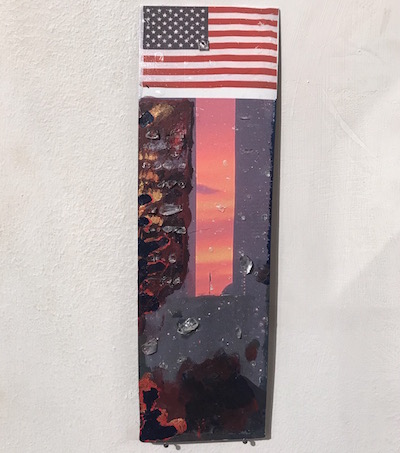
The experience being in Anne Frank’s room inspired him to “come back home to build something similar in theory” where education and respectful remembrance went hand-in-hand. That mission was further realized on Sept. 7, when the museum unveiled a new sculpture entitled “Metamorphosis,” created by Belgium-born, New York City based artist Marie-Hélèn.
“The artist used her own original photo of the World Trade Center that was then heat pressed onto trade center metal,” Suson said. “We gave the artist glass from the towers that she chipped and placed throughout the project.”
In the center of the flag that is fashioned to the top of the artwork is a gemstone that was made from World Trade Center glass. The glass was shaped into gems to be placed in rings for 9/11 families. One side depicts the towers engulfed in flames, with broken glass representing the past. On the other side is an untouched tower. This new tower represents hope.
“My goal,” Suson said of his own hopes, “is to keep the memory of 9/11 alive through images and artwork — so that our world doesn’t forget.”
At 420 W. 14th St., (2nd floor; btw. Ninth & 10th Aves.). Hours: Wed.–Sun., 11am–3pm. Admission: $25 ($19 for ages 4-12 and seniors 65+, free for 9/11 family members; $15 for military. Discounted rates for groups of 20+ (maximum guests per tour, 30). For more info, visit groundzeromuseumworkshop.org or call 212-920-4264.
